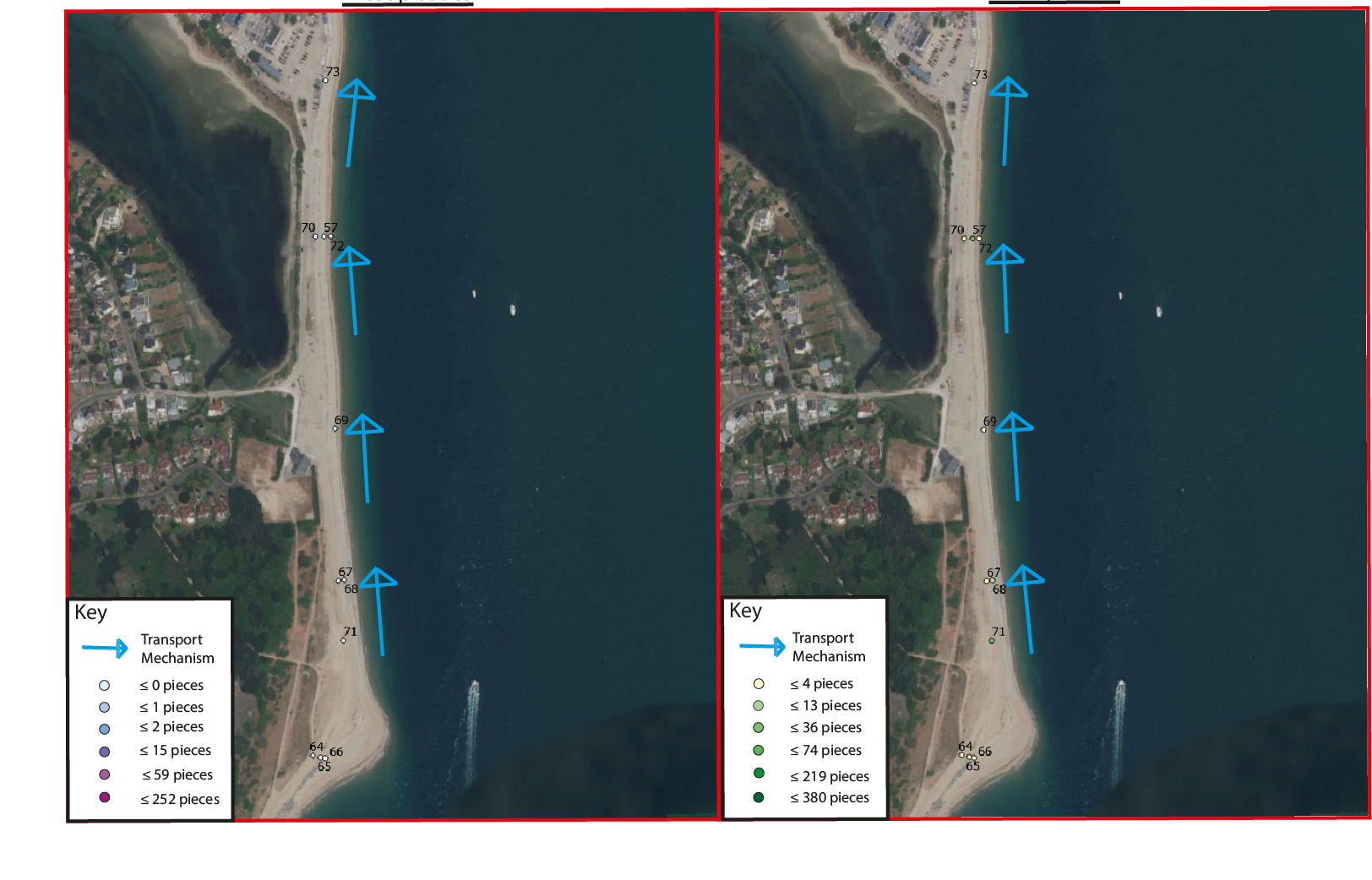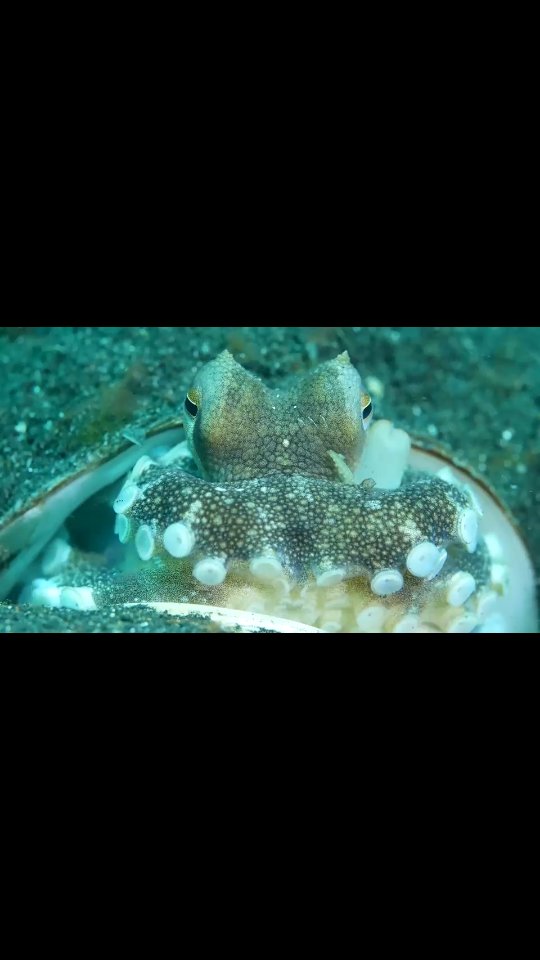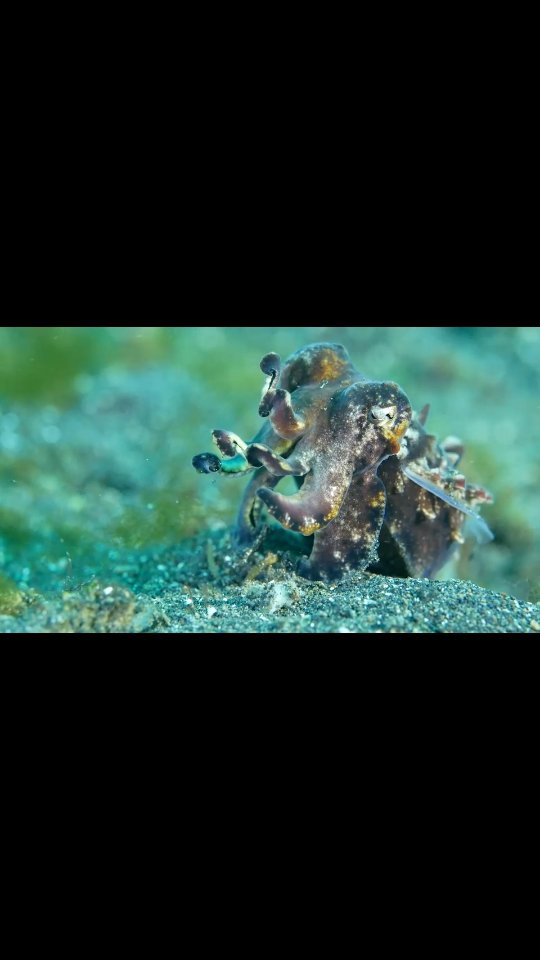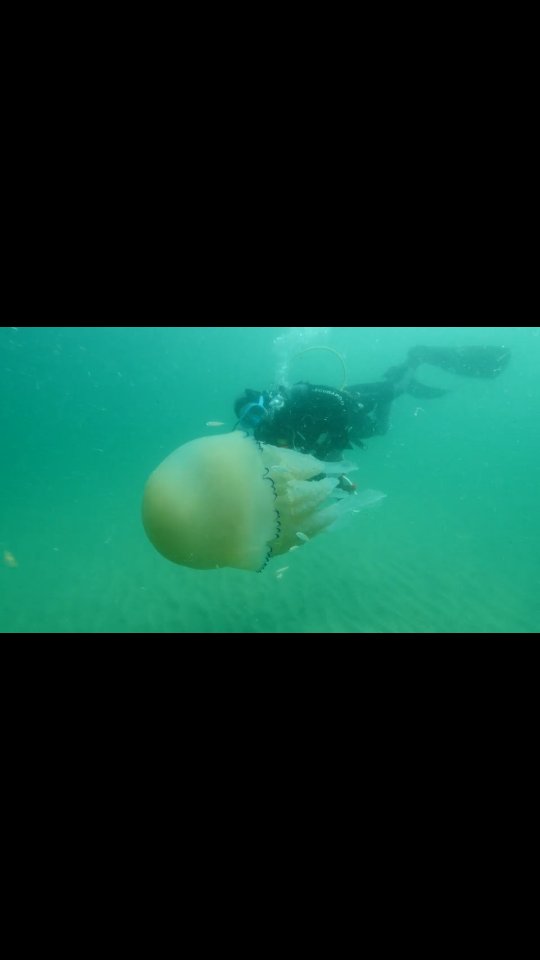This project aims to investigate a possible connection between microplastics and sediment budgets. Whilst a developing subject area, there are many reports that despite the increasing concern and studies over the impacts and worldwide spread of plastics and microplastics in particular, not much is known of the transportation of such plastics and how they are affected regarding coastal physical processes. This research is investigating whether surface floating microplastics, plastic pieces smaller than 5mm, are transported in a similar manner to sediment in a sediment budget, which itself is a balance of sediment volumes within a coastal system, between sources, which are an input, and sinks, which are an output. Sediment budgets are a global concept, making research here relevant to coastlines the world over.
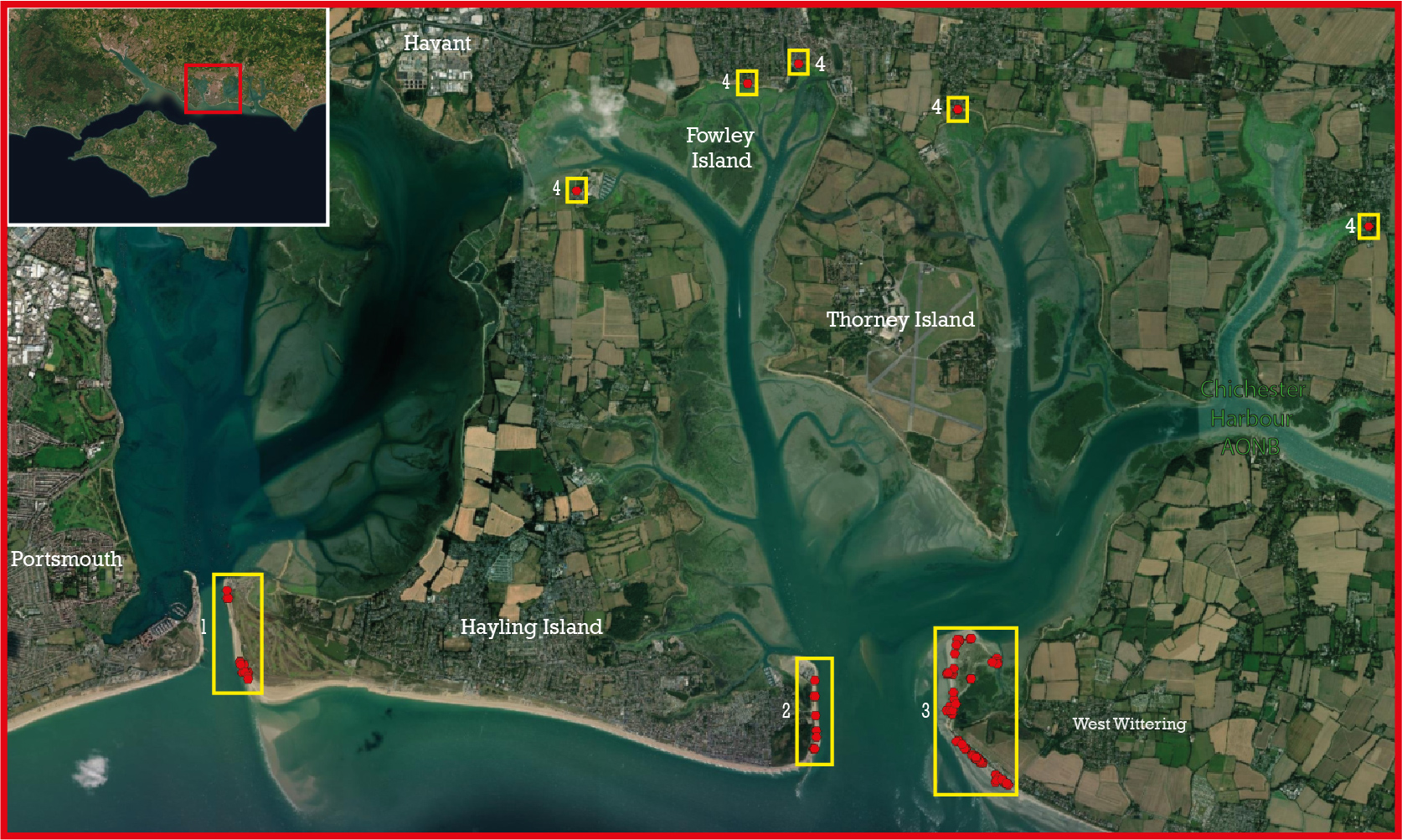
Data for this project was provided by David Jones and the Just One Ocean charity. It includes micro and meso plastic data from 122 sites at 5 locations – west and east Hayling Island beach, East Head spit, West Wittering beach and Chichester Harbour. David Jones and his volunteers collected this data by taking 5 10cmx10cm sediment extractions from 5 1mx1m quadrats at each site. The plastic was removed from the sediment by filtering, being sorted and counted using a magnifying lens. Using the site coordinates and plastic counts, several maps were developed using ArcGIS PRO software and knowledge of sediment transport processes from a SCOPAC study in 2012. The next step is to analyse these results, and link with sediment budget processes to possibly explain the trends and patterns shown. Hopefully a strong link is evident, and knowledge on sediment budgets can be used in the future to direct microplastic cleanup operations.
